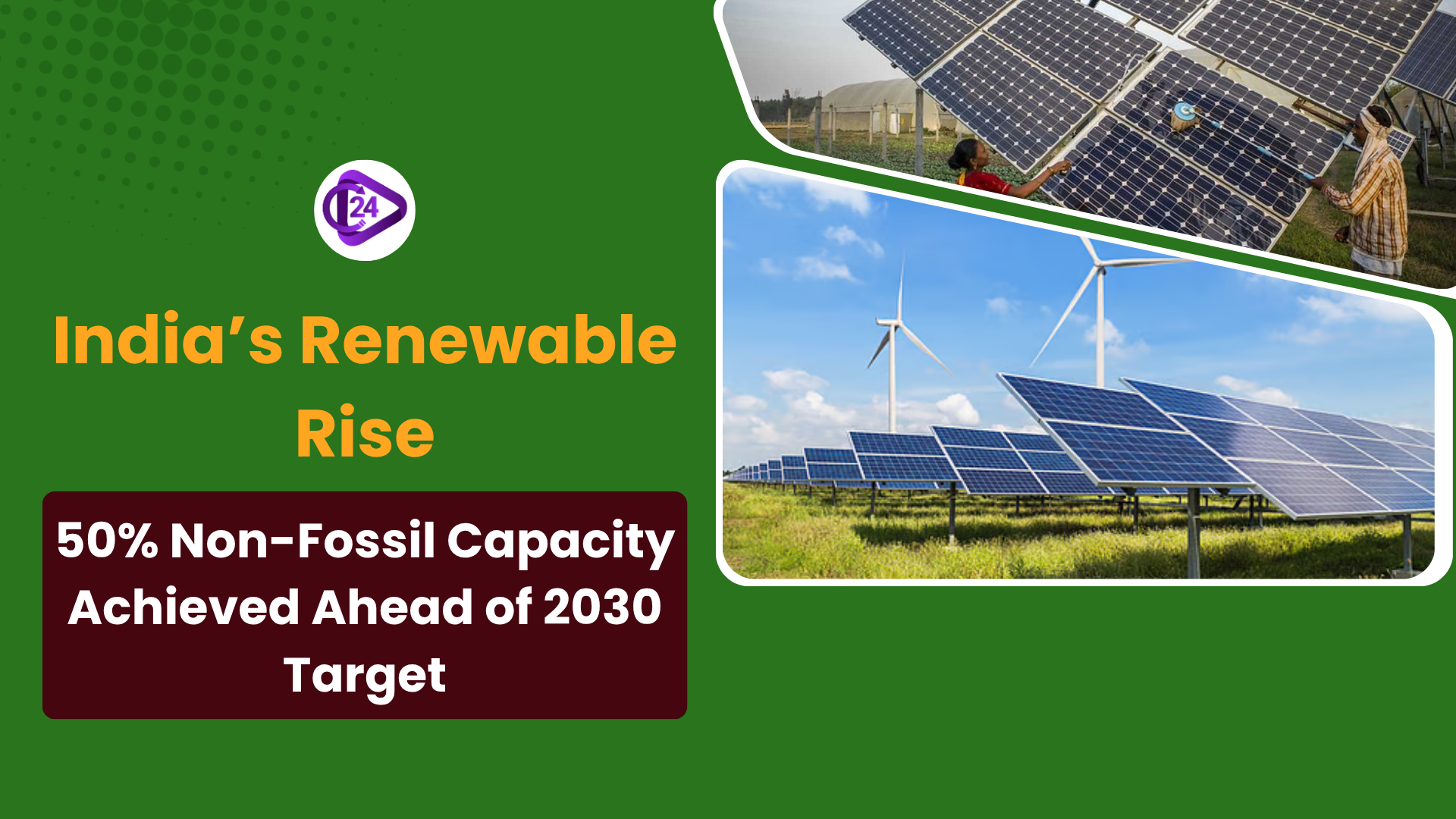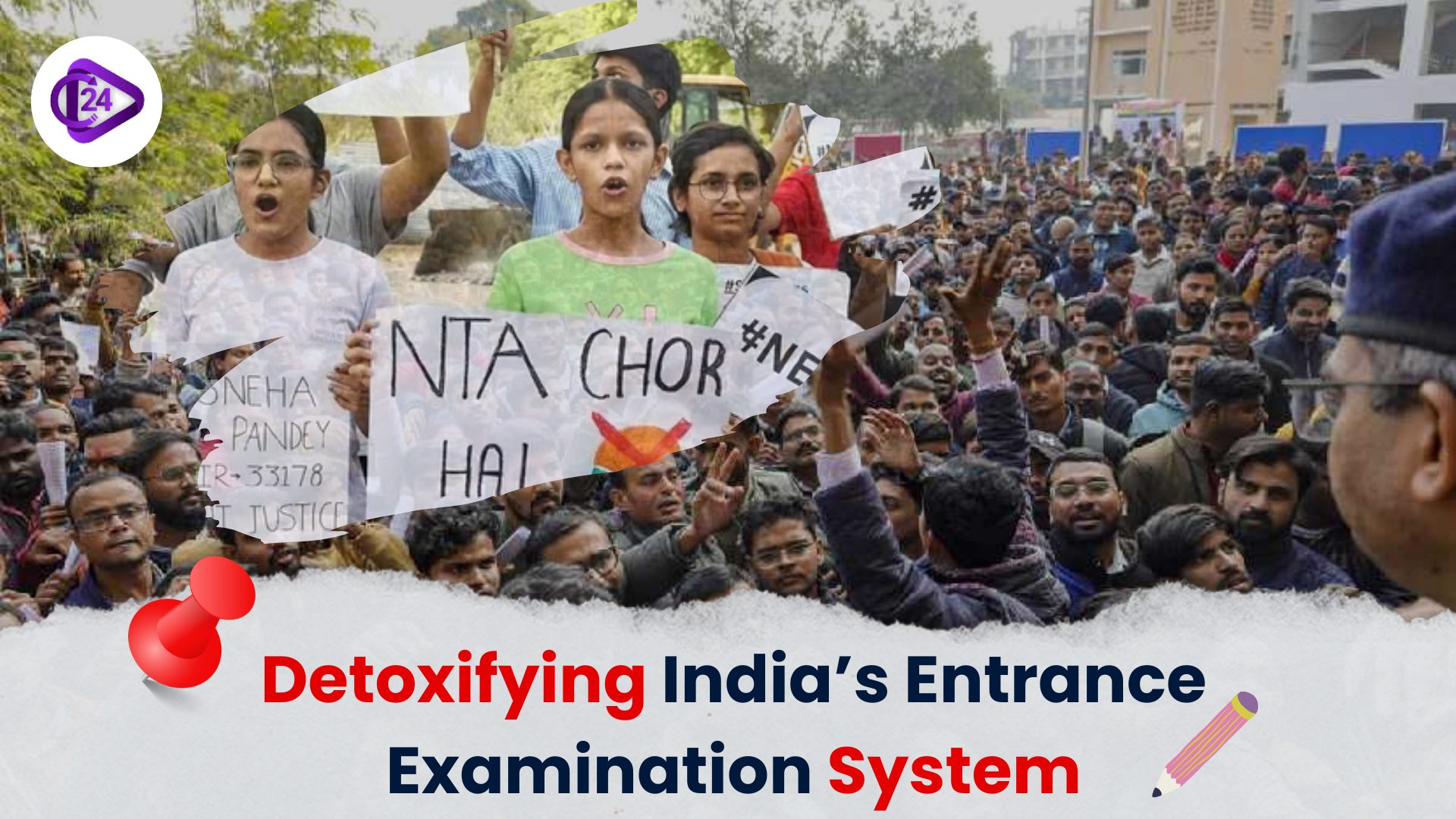
India has crossed a significant milestone in terms of clean energy; the country is encountering half of its entire installed electricity capacity with non-fossil sources five years ahead of schedule in 2030. This milestone indicates healthy policy support, new initiatives such as PM-KUSUM and PM Surya Ghar coupled with a swift upsurge in solar, wind, and bioenergy. It has also boosted livelihood in the rural areas and has reduced pollution as well as improved access to energy. The experience in India has changed so that the country is viewed as a global climate leader despite its low per capita emissions. In the future, the priority will be given to strong grid integration, storage, digitalisation, and sustainable consumption.
Context:
-
As a country that signed the Paris Agreement, India had committed to its Nationally Determined Contributions (NDCs) to increase its 50 percent installed electricity capacity based on non-fossil sources by 2030.
-
This was achieved in July 2025, which means that India was five years ahead of schedule in the process of energy transition.
-
The announcement is consistent with the international leadership on climate and domestic objectives of self-reliance, sustainability and inclusive growth.
Key Points for UPSC
Milestone Achievement:
-
India currently enjoys 50.08% of the overall generation of non-fossil energies (Renewables + Large Hydro + Nuclear).
-
Dispatched electricity production: 365.67 GWh (as of June 30, 2025).
Policies and schemes
-
PM-KUSUM: Solar pumps and agrovoltaics for farmers.
-
Pm surya ghar Muft Bijli Yojana: 1 crore households to get rooftop solar.
-
Solar Parks and Wind-Solar Hybrid Policy: Those are large low-tariff solar plants.
-
Increase of bio energy: improve income in rural areas and close the economy.
Benefits of energy transition
-
Decarbonisation + Development: Improved health of people, jobs in the countryside, decrease in harm to the air.
-
Clean energy through decentralised energy.
-
Improved resilience and energy security to climate.
Global Climate Global:
-
India is one of the few G20 countries that are on schedule to meet/exceed NDCs.
-
Promoting climate justice and sustainable lifestyles, green growth at the international platforms (COP, G20).
-
The per capita emissions are amongst the lowest in the world.
Road Ahead:
-
Increase twice in per capita clean electricity usage - particularly in rural vicinities.
-
Make a long-term investment in the grid in Battery Energy Storage Systems (BESS) and pumped hydro to stabilise the grid.
-
Focus on AI and digitalisation of smart grids and energy markets.
-
Discuss digital infrastructure on cybersecurity issues.
-
Encourage solar/wind infrastructure, circular economy, green hydrogen.
Conclusion:
The success of India to reach 50 percent non-fossil energy, five years ahead of the schedule, shows that economic gains and sustainability can be compatible issues. Through effective leadership, progressive policies, and the embracement of technology, India has taken the position of a leader in the global move towards green transition. To take decisive steps towards decarbonisation, India should aim at resilience, equity and innovation to anchor decarbonisation and propel a sustainable inclusive energy future.



 Reforming India’s Entrance Exams: Towards Equity and Student Well-being
Reforming India’s Entrance Exams: Towards Equity and Student Well-being Dowry Deaths in India: Nikki Bhati Case Exposes Systemic Silence
Dowry Deaths in India: Nikki Bhati Case Exposes Systemic Silence J&K: Annual Mela Patt Festival Begins in Bhaderwah
J&K: Annual Mela Patt Festival Begins in Bhaderwah Prime Minister Extends Warm Greetings on Nuakhai Festival
Prime Minister Extends Warm Greetings on Nuakhai Festival School Enrolment in 3-11 Age Group Drops by 25 Lakh: UDISE+ Report
School Enrolment in 3-11 Age Group Drops by 25 Lakh: UDISE+ Report Punjab and Haryana HC Grants Bail to Bangladeshi Woman: Application of Article 21 for Foreign Nation
Punjab and Haryana HC Grants Bail to Bangladeshi Woman: Application of Article 21 for Foreign Nation NHAI launches Project Aarohan to support education of toll plaza workers’ families
NHAI launches Project Aarohan to support education of toll plaza workers’ families RAN SAMWAD-2025: A Groundbreaking Tri-Service Seminar on Warfighting at Army War College
RAN SAMWAD-2025: A Groundbreaking Tri-Service Seminar on Warfighting at Army War College CISF Launches First All-Women Commando Unit to Strengthen Gender Parity
CISF Launches First All-Women Commando Unit to Strengthen Gender Parity NCERT Introduces Indian Classical Art Forms in School Curriculum (Classes 3–8)
NCERT Introduces Indian Classical Art Forms in School Curriculum (Classes 3–8)






